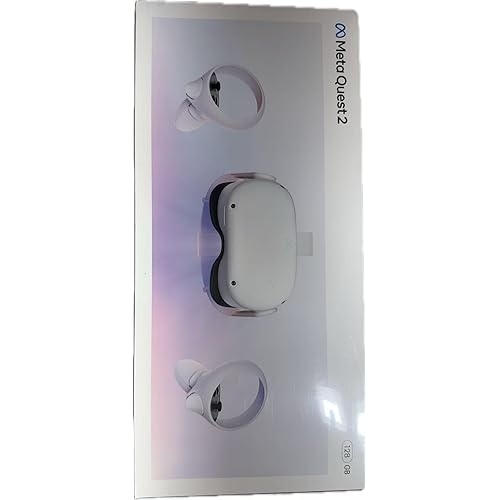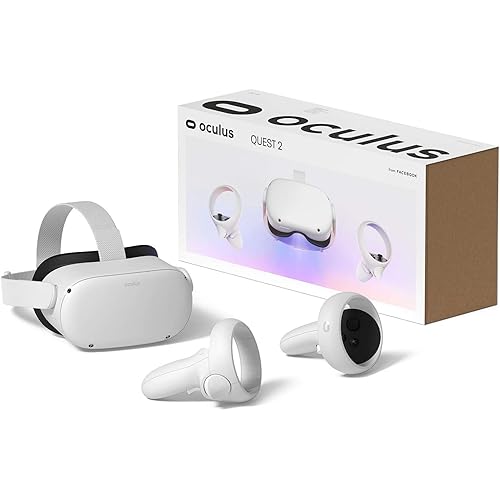







Buy Now, Pay Later
- – Up to 36-month term if approved
- – No impact on credit
- – Instant approval decision
- – Secure and straightforward checkout
Ready to go? Add this product to your cart and select a plan during checkout.
Payment plans are offered through our trusted finance partners Klarna, Affirm, Afterpay, Apple Pay, and PayTomorrow. No-credit-needed leasing options through Acima may also be available at checkout.
Learn more about financing & leasing here.
FREE refund/replacement until Jan 31, 2026 Learn more
To qualify for a full refund, items must be returned in their original, unused condition. If an item is returned in a used, damaged, or materially different state, you may be granted a partial refund.
To initiate a return, please visit our Returns Center.
View our full returns policy here.
Features
- Top VR gaming library: Blast, slash and soar your way through the top library in VR gaming. Oculus Rift S lets you play hundreds of games and exclusives already available in the Oculus store, with so much more to come.
- Improved optics: Stare down the competition with next-generation lenses and a sharper display. Improved optics deliver bright, vivid colors and reduced screen-door effect.
- Ergonomic design: Keep your head in the game thanks to a Halo headband redesigned with speed in mind. Rift S stays securely and comfortably in place with a quick twist of the fit wheel, so it can take-or double take-your fastest reactions.
- Oculus touch controllers: Arm yourself with our updated Oculus touch controllers. Your slashes, throws and grab appear in VR with intuitive, realistic precision, transporting your hands and gestures right into the game.
- Oculus insight tracking: take a step forward with Oculus insight. It translates your movements into VR No matter which way you're facing and provides room-scale tracking without external sensors.
- Oculus Rift S requires your Facebook account to log in, making it easy to meet up with friends in VR and discover communities around the world.
Description
Oculus Rift S PC-powered VR gaming headset.
Specs & Other Info
| Specification | Details |
|---|---|
| Launch Date | May 21, 2019 |
| Pricing Strategy | The crossed-out price indicates the original List Price. The current price displays the discount on the List Price. |
| Dimensions | 10.94 x 6.3 x 8.27 inches |
| Item Category | Digital Gaming |
| Language Compatibility | English |
| Manufacturer's Model Number | 301-00178-01 |
| Product Continuity | Product is not discontinued by the manufacturer. |
| Item Weight | 5.92 pounds |
| Producer | Oculus |
| Battery Requirements | Needs 4 AA batteries - included with the product. |
| Availability Date | First available since March 18, 2019 |
Frequently asked questions
Similar Products
Top Amazon Reviews
🚀 Abunda's Overview
This is our summary and key points to consider based on customer reviews.
The Oculus Rift S VR Headset has been met with largely positive reviews by users. Many praised the significant upgrade from its predecessor, the CV1, in terms of visual quality and tracking. Continuous updates from Oculus appear to resolve earlier issues and improve the user experience. Not forgetting the reasonable price point and enhanced ergonomic design which lends to a comfortable gaming experience.
Pros
- 🎉 Improved pixel density and visual clarity, reducing screen-door effect and god rays.
- 🙌 The inside-out tracking system is effective and easy to set up.
- 🔊 Option of using personal headphones for better audio quality.
- 🛠 Oculus engages in regular software updates to improve the product.
- 💵 Reasonably priced at $399.
- 🪑 Head strap is convenient and comfortable.
Cons
- 🧽 Foam rubber padding around the face isn't removable and it's difficult to clean.
- 🙅♂️ Headset does not work well in complete darkness or dimly lit areas.
- 🎧 Built-in audio quality could be improved.
- 👀 IPD adjustment only available via software settings, could be an issue for some users.
Should I Buy It?
If you're looking for a medium-price ranged VR headset with great visual quality and an improved tracking system, the Oculus Rift S is a solid choice. Given the regular updates, the usability and performance of the Rift S continue to improve. Taking into account some minor flaws, the substantial pros make this device a worthy purchase for a richer VR experience.


















